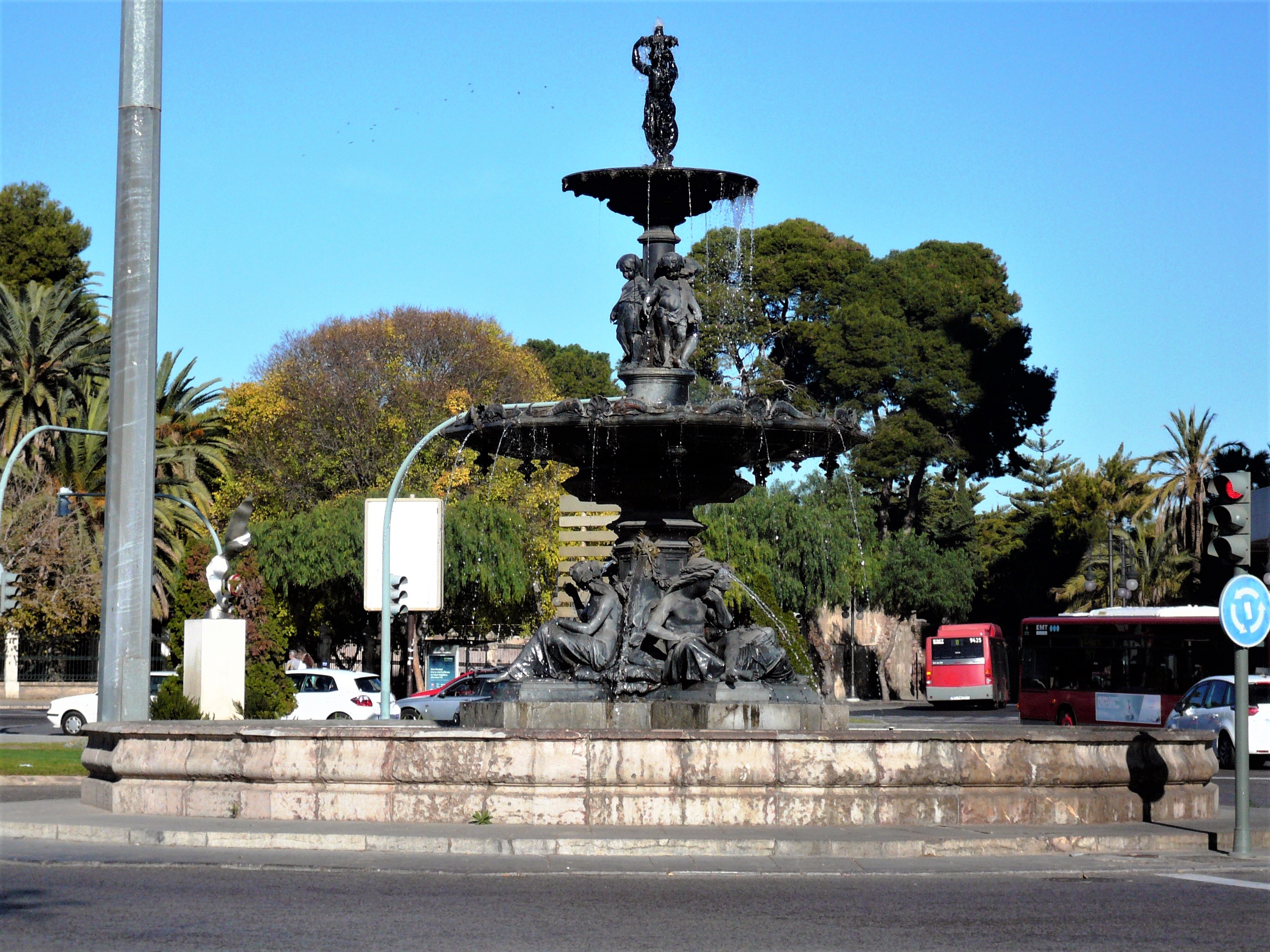This bridge was to be provisional, in principle, due to the needs of the traffic while the Bridge of the Exhibition and the Alameda subway station were being built. It was definitely left. It was inaugurated in 2002 and its flowers are constantly renewed.
The Market Square is located in the old suburb of La Boatella. Jaime I granted a privilege in 1261 for a permanent market to be installed here.
The square was used to organize jousts and shows like those carried out by Alfonso the Magnanimous. It was also the place of executions since the beginning of the 15th century (the gallows was located here). It also served, from 1400 to 1859, to celebrate bullfights.
The Botanical Garden of Valencia also promotes congresses of specialists, as well as conferences, meetings and informative exhibitions.
This garden has a large collection of cacti and other desert plants.
Here was the Casa Cofradía de los Corredores de Cuello, who published aloud the price of the things that were publicly auctioned.
The building has a colonnaded main courtyard with a statue of the Valencian philosopher Luis Vives in the center.
In 1844 the construction of the portico of Tuscan columns of this patio began, while the second floor of columns, of the Ionic-Roman type, would be carried out in 1931 by Javier Goerlich.
To commemorate the 500th anniversary of its foundation, another reform is carried out (1997-1999), in order to adapt the building to its new functions as a cultural center. In this renovation, modern additions are removed and historical elements are enhanced. The archaeological remains of the Muslim era, which were already known, were revealed through a methacrylate plate on the ground, at the entrance to the University Street.
The Rambleta Park also has a sports area.
Evergreen trees such as palm trees, ficus trees, eucalyptus trees, magnolias, etc. have been planted on the east side, forming a screen.
030c CARMEN NEIGHBORHOOD. Valencia City Council. Benlliure House Museum
- Carmen Neighborhood
- Hits: 750
Through the door at the end of the hall you enter the garden.
Ten years later, after the inauguration of the first metro line (1988), the line between Alameda and Avenida del Cid was inaugurated.
In 1999, the 2.4-kilometre tunnel between Avenida del Cid and Mislata was inaugurated.
In 2003, the underground section of the line between Alameda and Ayora was inaugurated.
And in 2007, the section between the Marítimo-Serrería underground station and the Airport (port-airport line) was inaugurated.
The Alameda is already mentioned in writings from 1530 as a place for walking and recreation, then called El Prado. In the years 1643-1645 Rodrigo Ponce de León, viceroy of Valencia, ordered the planting of two rows of poplars, due to which it was called Alameda.
The Fountain of the Four Seasons, in the image, dates from 1861. Previously it had been in the Orchard of Canon Pontons, in Patraix.
This square is dedicated to the Fueros of Valencia, promulgated in 1261 by Jaime I. It was the legislation of the Valencian territory until 1707, when King Felipe V of Bourbon repealed them with the Nueva Planta Decrees.
221a LA XEREA NEIGHBORHOOD. St. Vincent Ferrer Square. Church of St. Thomas and St. Philip Neri (18th century)
- La Xerea Neighborhood
- Hits: 600
This square was formed by the demolition of a block of houses in 1772. The square was first called the Congregation. In 1931 it was named after San Vicente Ferrer. It is popularly known as "Plaza de los Patos" for the sculptures of its fountain.
The name of this square does not come from a supposed saint so named, but from the discovery of a bundle, in the 13th century, which, when opened, contained an image of Christ. In this way it was called the Holy Bulge of Jesus (Sant Bult in Valencian). The image of Christ is usually kept in the Sant Bult Home School Board, located on En Blanch street.
















